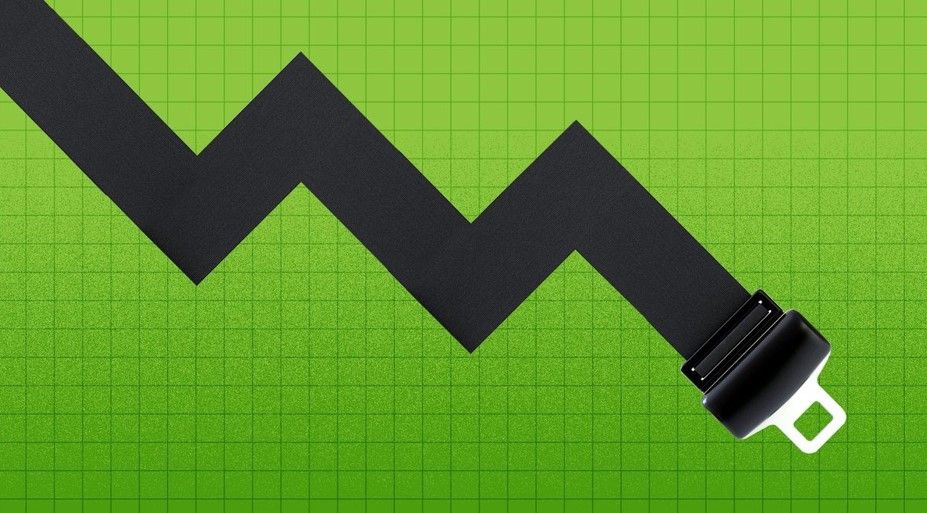
More credit managers are improving cash flow forecasting, a technique for estimating a business’s future cash movements. However, this wouldn’t be possible without collections forecasting.
Why it matters: Understanding and improving collections forecasting is key as it enables businesses to maintain financial stability without resorting to external financing options.
Collections forecasting, or accounts receivables (A/R) forecasting, uses payment history to predict future cash flow. Specifically, it uses clients’ past payments to estimate future payment amounts and timings.
The benefits of accurate collections forecasting include:
- Eliminates reliance on external financing for cash flow.
- If financing is still needed, you can make informed decisions about the required amount and repayment period.
Whereas cash flow forecasting predicts a business’s future cash inflows and outflows. This accurate prediction helps companies foresee cash positions, avoid serious deficits and effectively use potential surpluses.
What they’re saying: “It is different in that cash flow forecasting considers a company’s total cash inflows and outflows,” said JoAnn Malz, CCE, ICCE, NACM Chair and director of credit, collections and billing at The Imagine Group LLC (Shakopee, MN). “Collections forecasting focuses on the A/R-related inflows that go into total cash flow forecasting.”
Ray Yarborough, CBA, CCRA, CICP, senior accounts receivable manager at Connexity, Inc. (Santa Monica, CA), says collections forecasting is just one component of a company’s cash flow picture. “I’d say collections forecasting is based solely on existing receivables and customer payment history, while cash forecasting is based on collection forecasting and expected future revenues,” he added.
Yes, but: Some collections forecasting models can be very complicated and time consuming. One of the simplest ways to forecast A/R collections is using days sales outstanding (DSO).
Divide DSO by 365 (total days in a year) to get a daily collection rate. Multiply this by your sales forecast to estimate the accounts receivable for that period.
“Understanding your average DSO and sales forecast gives you a great base perspective, but it’s important to remember that reality is unexpected, and you cannot always expect an average outcome,” reads a Gavati article. “There will always be those clients with either overdue or prepaid in invoices. And it’s crucial to keep those possibilities in mind.”
At present, Asha Weekes, ICCE, senior manager, credit at Gildan (Christ Church, Barbados), uses percentage of current A/R and percentage of past-due A/R to forecast collections. “The percentage is based on the customer’s historical data, which is subject to change as their payment habits change,” she said. “However, unless market conditions are highly volatile, these habits may not change significantly enough to impact the percentages used.”
There is a rise in programs or tools available that businesses are using to simplify their collections forecasting process. “Startups and small businesses may approach collections forecasting in a manual way but as the business grows, it may become more labor intensive,” Weekes said. “To improve accuracy and efficiency in business, you must invest in tools that can not only assist in collections forecasting, but also extend their cash flow forecasting as well.”
Some credit professionals use artificial intelligence (AI) to help with both collections forecasting and cash flow forecasting. Yarborough said he hired consultants to build models in Power BI. “On the collection side, the model identifies due dates and average payment dates by customer, and we focus on identifying the reason for the gap between these two figures,” he said.
By analyzing the average days to pay, credit managers can forecast payment dates for cash flow analysis. “Our portfolio includes prepaid, Net 30, Net 60 and Net 90 terms, making this AI model’s predictive capabilities invaluable,” Yarborough said. “It uses historical sales data to forecast revenues, which are then combined with the predicted payment dates from the collections forecast. These models are proving highly accurate and continue to improve over time.”
Formulas for collections forecasting will change based on many factors such as industry type, level of deductions, discount terms offered to customers, seasonality, economic or natural disasters and customer predetermined payment schedules, according to Malz. “Forecasts are always estimates and need to be treated as such with the application of human judgment applied for fluctuating circumstances,” she said.
Malz monitors the percentage collected of the amount available to collect each month knowing that a small percentage will be uncollectible (and unidentifiable in our system) due to deductions.
What’s next: “Customers are willing to pay for the most part but are requesting more extended payment terms and embarking on the use of different payment models to pay invoices,” said Weekes. “Once both parties have come to an agreement, collecting follows suit.”
Yarborough says he hasn’t seen much change for U.S. customers in terms of difficulties in collections but has noticed an increase in insolvency filings in Europe. “If you’re in credit management, you really need to consider ways to leverage AI, if you aren’t already,” he said. “While we are still in the early stages of using Power BI for collections forecasting, I’m very encouraged by the results I’m seeing.”
Malz is helping customers work through deductions and missing invoices, reconciling accounts and finding solutions to their problems. By doing so, her company has maintained strong collection results.
“There are customer segments we monitor closely and work to control exposure to our company’s cash flow via thorough risk assessment and use of credit limits and, if necessary, hold management techniques,” Malz said. “We may have to implement strategies such as using credit limit controls or talking with our sales partners about implementing a new strategy.”
The big picture: Cash flow forecasting and collections forecasting are interconnected techniques that help businesses predict their future financial stability, reducing reliance on external financing, with an increasing number of companies turning to AI tools for more efficient and accurate forecasts.





